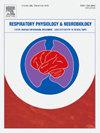Chrysin-loaded PLGA nanoparticle attenuates ferroptosis in lipopolysaccharide-induced indirect acute lung injury by upregulating Nrf2-dependent antioxidant responses
IF 1.6
4区 医学
Q3 PHYSIOLOGY
引用次数: 0
Abstract
Chrysin (CHR) is the principal active compound in honey, propolis and plants. Its pharmacological effects include anti-inflammatory, antiallergic, and antioxidant capabilities. However, its poor solubility and bioavailability constitute a limitation. In this study, Poly-lactic-co-glycolic acid (PLGA) was used as a nanocarrier to enhance the stability, bioavailability, and effectiveness of CHR to protect mice from indirect acute lung injury (ALI) caused by lipopolysaccharide (LPS). CHR-loaded PLGA nanoparticle (CHR-NP) was prepared and characterized using techniques such as FTIR, zeta potential analysis, DLS, in vitro drug release assessment, encapsulation efficiency measurement, and TEM. Prior to the intraperitoneal injection of LPS (10 mg/kg), C57BL/6 mice were orally administered CHR (50 mg/kg), PLGA (50 mg/kg), CHR-NP (50 mg/kg), and dexamethasone (Dexa) (5 mg/kg) for a duration of six days. Following 24 h of LPS or normal saline (control) injection, the mice were anesthetized. CHR-NP increased catalase, glutathione, and glutathione peroxidase while decreasing malondialdehyde, myeloperoxidase, nitric oxide, tumor necrosis factor (TNF)-α, interleukin (IL)-1β, IL-12, and interferon (IFN)-γ. Moreover, treatment with CHR-NP augmented the gene and protein expression of the Keap1/Nrf2/ARE signaling pathway utilizing quantitative real-time PCR (RT-PCR), western blotting, and immunohistochemistry. Additionally, CHR-NP reduced histological alterations, pulmonary edema, damage, and iron deposition. Our findings indicate that CHR-NP significantly mitigated indirect ALI, possibly through the suppression of inflammation, oxidative stress, and ferroptosis via the activation of the Keap1/Nrf2/ARE signaling pathways.
白玉载PLGA纳米颗粒通过上调nrf2依赖的抗氧化反应,减轻脂多糖诱导的间接急性肺损伤中的铁凋亡
菊花素(CHR)是蜂蜜、蜂胶和植物中的主要活性化合物。其药理作用包括抗炎、抗过敏和抗氧化能力。然而,其溶解度和生物利用度差构成了限制。本研究以聚乳酸-羟基乙酸(PLGA)为纳米载体,提高CHR的稳定性、生物利用度和保护小鼠免受脂多糖(LPS)引起的间接急性肺损伤(ALI)的有效性。采用FTIR、zeta电位分析、DLS、体外释药评估、包封效率测定、TEM等技术对其进行表征。在腹腔注射LPS(10 mg/kg)之前,C57BL/6小鼠口服CHR(50 mg/kg)、PLGA(50 mg/kg)、hr - np(50 mg/kg)和地塞米松(5 mg/kg),持续6天。LPS或生理盐水(对照组)注射24 h后,对小鼠进行麻醉。hr - np增加过氧化氢酶、谷胱甘肽和谷胱甘肽过氧化物酶,同时降低丙二醛、髓过氧化物酶、一氧化氮、肿瘤坏死因子(TNF)-α、白细胞介素(IL)-1β、IL-12和干扰素(IFN)-γ。此外,通过实时荧光定量PCR (RT-PCR)、western blotting和免疫组织化学,cr - np治疗增强了Keap1/Nrf2/ARE信号通路的基因和蛋白表达。此外,cr - np可减少组织学改变、肺水肿、损伤和铁沉积。我们的研究结果表明,chrp - np可能通过激活Keap1/Nrf2/ARE信号通路来抑制炎症、氧化应激和铁死亡,从而显著减轻间接ALI。
本文章由计算机程序翻译,如有差异,请以英文原文为准。
求助全文
约1分钟内获得全文
求助全文
来源期刊
CiteScore
4.80
自引率
8.70%
发文量
104
审稿时长
54 days
期刊介绍:
Respiratory Physiology & Neurobiology (RESPNB) publishes original articles and invited reviews concerning physiology and pathophysiology of respiration in its broadest sense.
Although a special focus is on topics in neurobiology, high quality papers in respiratory molecular and cellular biology are also welcome, as are high-quality papers in traditional areas, such as:
-Mechanics of breathing-
Gas exchange and acid-base balance-
Respiration at rest and exercise-
Respiration in unusual conditions, like high or low pressure or changes of temperature, low ambient oxygen-
Embryonic and adult respiration-
Comparative respiratory physiology.
Papers on clinical aspects, original methods, as well as theoretical papers are also considered as long as they foster the understanding of respiratory physiology and pathophysiology.

 求助内容:
求助内容: 应助结果提醒方式:
应助结果提醒方式:


